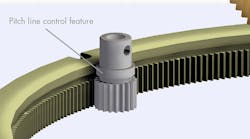Gears, especially in open gearing applications, share a set of well-known performance problems that crop up again and again across many different applications. The most common ones include excessive noise, vibration, heat, weight and corrosion. Gears also tend to be either over-lubricated or subject to wear, which respectively causes contamination from grease or metal particles. At best, all these performance issues will result in gears that are expensive to maintain. At worst, they will cause gears to fail prematurely, driving costs even higher. Download our paper to read how you can solve all of these problems with good gear design practices and the right material selection.
This paper is an interesting read if you aren’t familiar with Intech’s Power-Core gears – the paper takes a deep dive into some advance applications in medical, packaging, robotics, industrial gearing and gears for semi-conductor and solar wafer production. If you are skeptical about plastic gears or even considering plastics in your design this paper is a must read.
Click here to find out why Power-Core gears consistently outperform metal gears in the toughest applications

